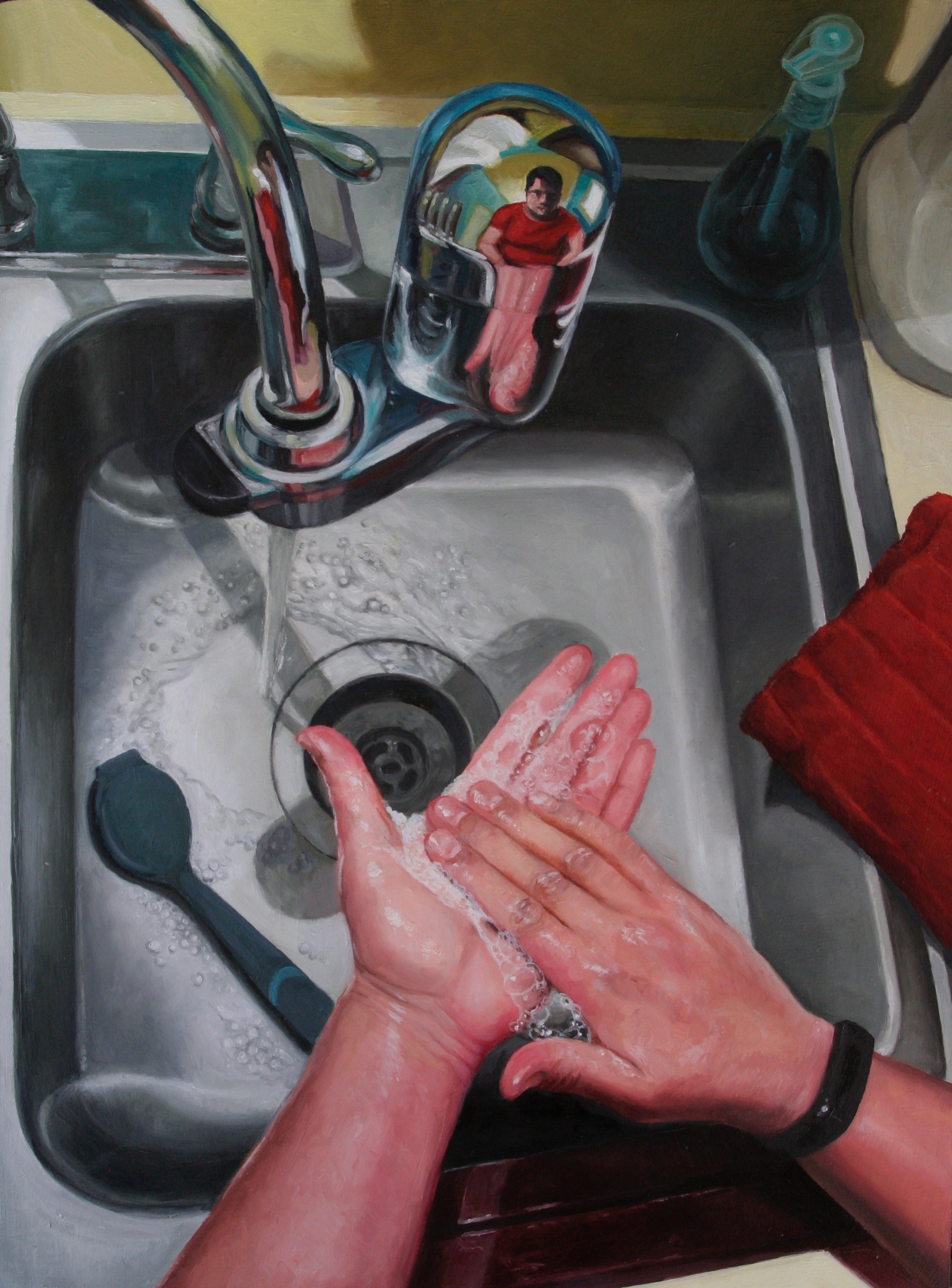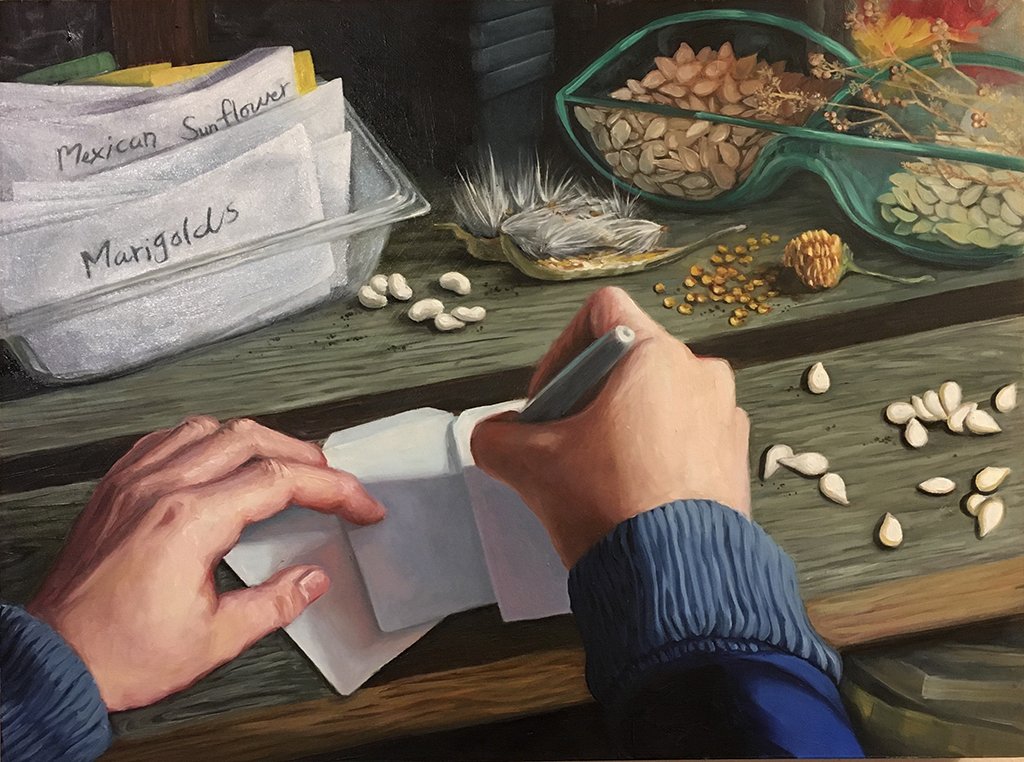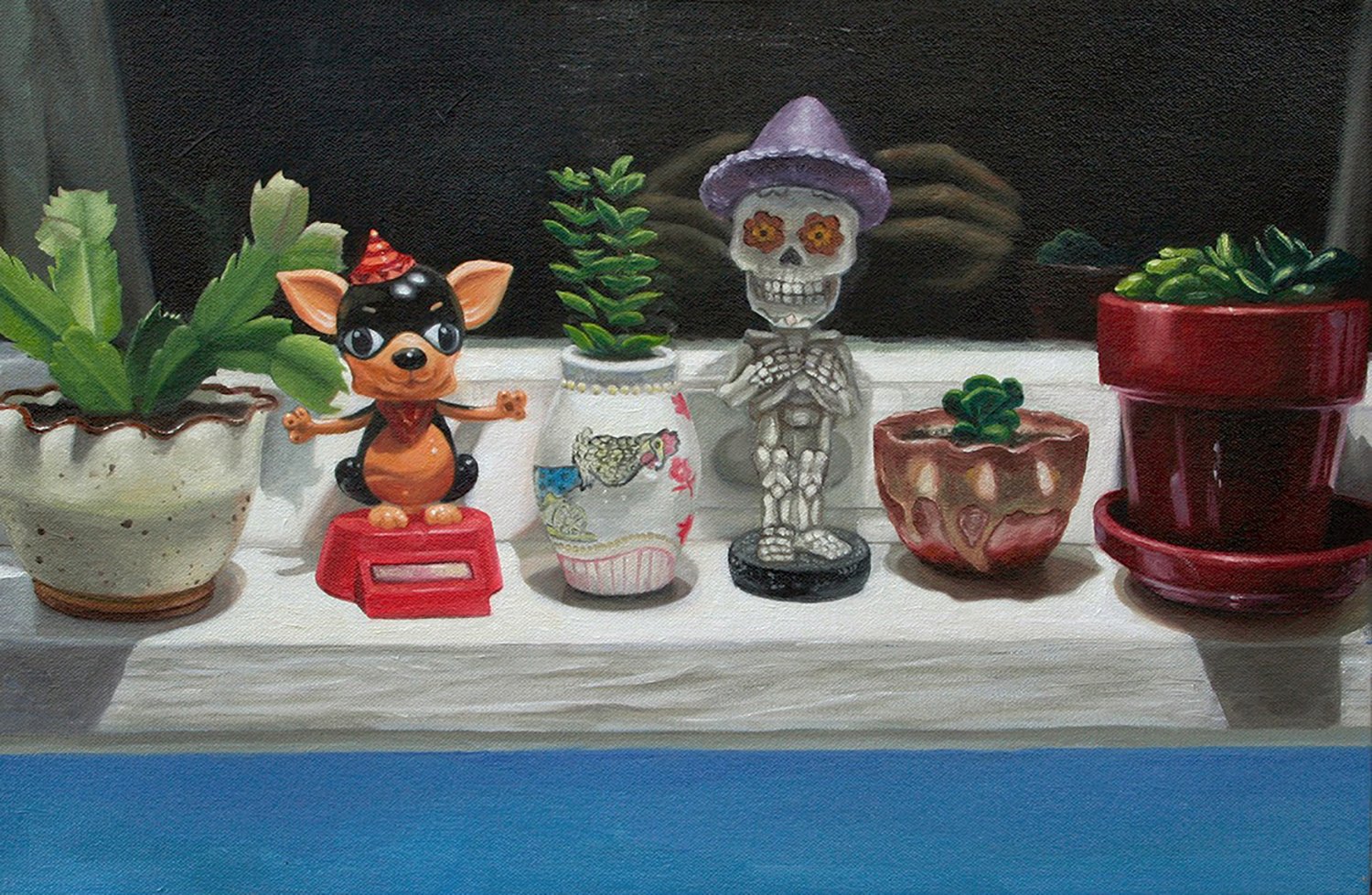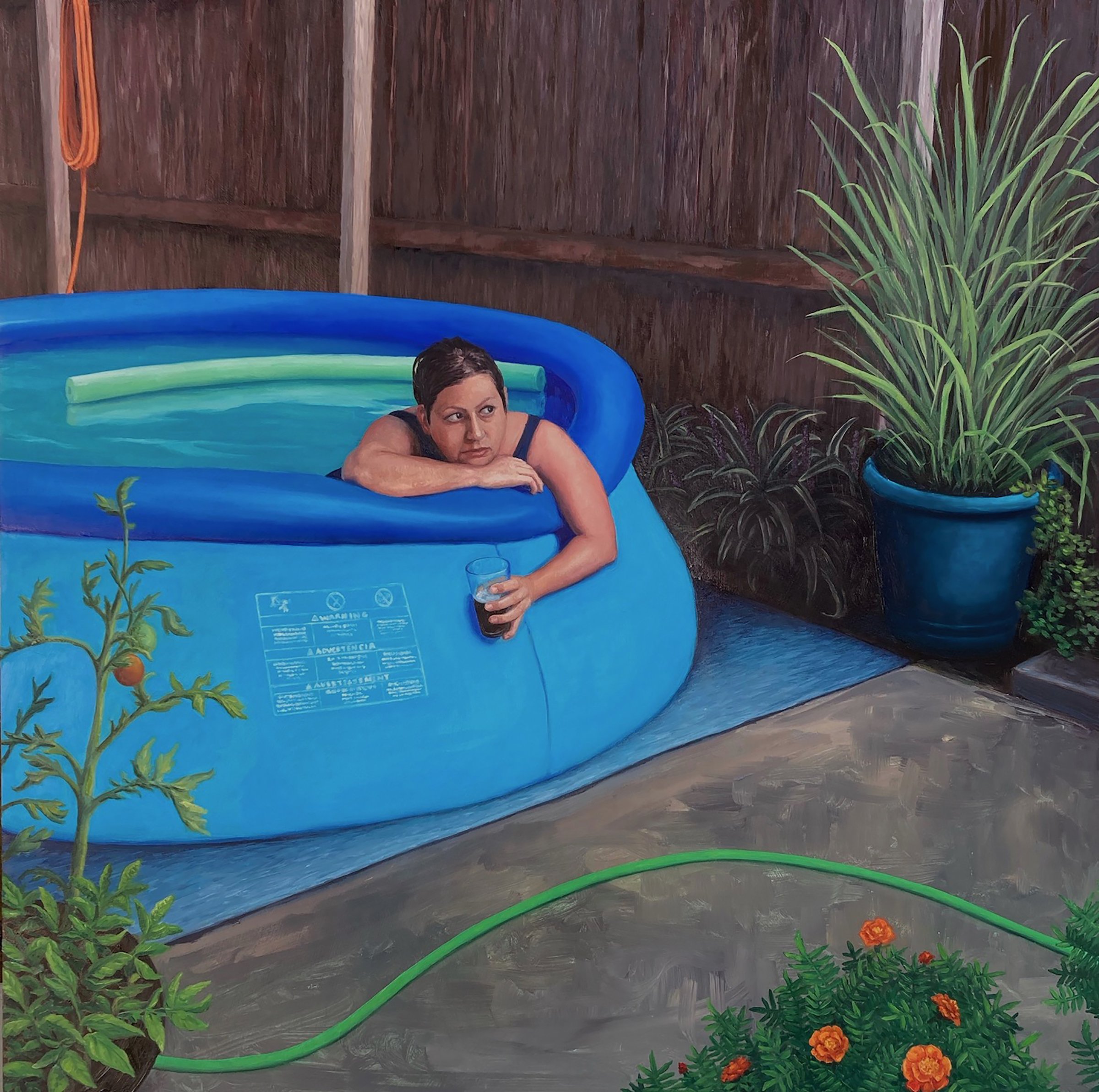Erika Navarrete
Erika Navarrete was born and raised in Visalia, California. Influenced by her Hispanic heritage, family dynamics, and the unique cultural atmosphere of one of the most productive agricultural areas in the world, she found her path to art at the College of the Sequoias in Visalia. There, she committed to pursuing art as a lifelong endeavor. Navarrete earned her BFA in Painting and Art History from the Kansas City Art Institute in 2003 and her MFA from the University of Nebraska-Lincoln in 2008. She is currently an instructor at the University of Evansville and the University of Southern Indiana in Evansville, IN.
Maintaining an active studio practice, Navarrete investigates relationships between people, the structure of the home, and the natural world through painting, drawing, and printmaking. Her work has been exhibited nationally and internationally, and she has received artist residencies at the Kimmel Harding Nelson Center for the Arts and was a visiting artist at the University of Texas Permian Basin. Recent solo exhibitions include The Silence is Loud at the E.B. White Art Gallery at Butler Community College in El Dorado, KS, and Somewhere Else: Paintings by Erika Navarrete at the Krannert Gallery at the University of Evansville, IN. She has also exhibited in numerous group exhibitions, including those at the Art Museum of Greater Lafayette (IN), Indianapolis Art Center (IN), The Lore Degenstein Gallery at Susquehanna University (Selinsgrove, PA), Gallery of Art and Design at the University of Southern Mississippi (MS), Gallery Sen in Sendai (Miyagi, Japan), and Sumaruyashiki in Shiroishi City (Miyagi, Japan).
Artist Statement
The framework of figures paired with various food, flora, and fauna within a domestic space allows me to work through the complexities of relationships, our internal dialogue, and coping mechanisms. Through painting and drawing, I am interested in creating the sensation or “atmosphere” of a moment that is neither before nor after, but somewhere in-between.
Currently, the exterior environment of the home has become more prominent in my work, heavily influenced by the first years of the COVID-19 pandemic and ongoing social and political uncertainty. For many of us, gardening and the natural world became solace. New rituals were born as the pandemic dragged on and we adjusted to the “new normal.” My backyard and garden, complete with a blue quickset pool, rusty fire pit, and a microcosm of wildlife, became a place to re-center and find elements of hope. That time has continued to permeate my thought process and influence the trajectory of my current work. I want to continue exploring my relationship to these outdoor spaces and rituals and how they can offer connection, healing, and sustenance, both physically and psychologically.
How has the environment you grew up in affected your art practice?
I was born and raised in Visalia, a central California town in the San Joaquin Valley near the Sierra Nevada mountain range. My Hispanic heritage, Catholic upbringing, and the strong agricultural roots of the area are part of the lens through which I see the world. I have a small immediate family, but my extended family is large. Growing up, I was shy and quiet, but attentive to the influence of the women in my family, family dynamics, superstitions, and traditions. Perhaps that is why my work has become so much about relationships and narrative. In addition to the influence of my immediate surroundings, I was fortunate to live within driving distance of major museums and cultural hubs such as Los Angeles and San Francisco, and I am thankful my parents took my sister and me as kids. There was even a trip to Spain that included a visit to the Prado Museum when I was eight. These were profound experiences in my formative years.
If your artwork was a mirror, what would it reflect?
This is an interesting way to think about my work. My work is very autobiographical to a degree, though I don’t do a lot of direct self-portraiture. My imagery is a carefully curated version of my life experiences and a way to ask questions. So, in a way, it reflects me, my story, and how I interpret what happens around me.
What is the most difficult part (or your least favorite part) of your process?
Time. That is the most difficult part. I marinate on ideas for a long while, and my painting style can be slow, especially knowing when a painting is done. I feel like I have a backlog of ideas waiting to be brought to fruition. I can be my own worst enemy when it comes to carving out time, which I know others can relate to. I am also a college art instructor, which can feed my practice as an artist but also complicates finding time (and energy) for artmaking.
Pursuing ‘artist’ as a career is not for the faint of heart. What is the most rewarding aspect of this pursuit?
I think there are many rewarding aspects to being an artist. For me, I enjoy the constant learning and knowing that as long as I am able, I can keep going and continue to grow and evolve as an artist. I also enjoy sharing the various aspects of artmaking with my students and witnessing the moments when something clicks for them. I still crave lively discussions with my artist comrades about process, ideation, and what influences them to create in their respective mediums. I also enjoy having another way to communicate and connect through imagery.
If your art is in a lineage of artists working within similar veins, who would be part of your lineage and why?
I would have to begin with early connections I felt with Frida Kahlo, Paula Rego, Eric Fischl, and my first art mentor, Richard Peterson. In literature, I first connected with magic realism beginning with Laura Esquivel’s Like Water for Chocolate, and later, authors Gabriel García Márquez and Isabel Allende. Other artists in the lineage would include Rebecca Campbell and Hope Gangloff, along with many contemporary artists leading the way with the figure.










